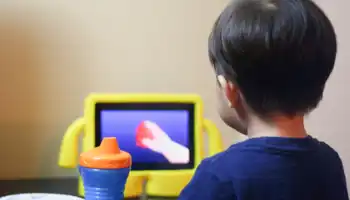Tech Overload: How Screen Time Impacts Children's Minds and Moods

If you're hearing more parents express concern about their child’s screen use, you’re not alone. Whether it's for school, socializing, or entertainment, screens have become embedded in daily life. And while tech has its upsides, many parents are noticing the downside: mood swings, attention issues, and disconnection at home.
As a therapist, you can guide families away from daily screen struggles by helping parents reframe the conversation. Instead of focusing solely on limiting screens, the goal is to redirect kids toward enriching, screen-free activities that promote mental clarity, emotional regulation, and authentic connection.
Why This Shift Matters
Helping parents understand the “why” behind screen limits is essential. Screens are designed to hijack attention with the flashing colors, instant rewards, and endless content stimulate dopamine, creating a cycle that makes everyday life feel dull by comparison.
Excessive screen time has been linked to:
Increased anxiety and irritability
Reduced attention span
Sleep disruption and physical inactivity
Lower emotional resilience and social connection
You can educate families on the neurological impact of this overstimulation. High dopamine, low oxytocin interactions interfere with the development of emotional regulation, connection, and curiosity. But real-world experiences like outdoor play, hands-on creativity, and face-to-face interactions help recalibrate this balance by boosting oxytocin and offering slower, more meaningful dopamine engagement.
How to Support Parents in Making the Shift
Encourage parents to move away from an all-or-nothing approach. Frame the transition not as punishment, but as an exciting opportunity for their child to engage with the world in more meaningful ways. Help them identify alternatives that align with their child’s interests like nature walks, building projects, art, sports, music, or even simply helping in the kitchen.
You can coach parents to:
Set consistent but compassionate boundaries around screen use
Model screen-free engagement and co-participation in alternative activities
Understand the emotional reactions their child may have during this transition
Celebrate small wins and moments of connection
A Resource to Recommend
If you're looking for a helpful tool to share with families, Supporting Parents in Shifting Screen Habits with Engaging, Screen-Free Alternatives offers simple, connection-building ideas that promote emotional well-being while reducing reliance on screens.

By following alongside Jay and Jasper’s adventure, kids will learn the benefits of getting outdoors, slowing down, and appreciating the beauty of the world around them.




